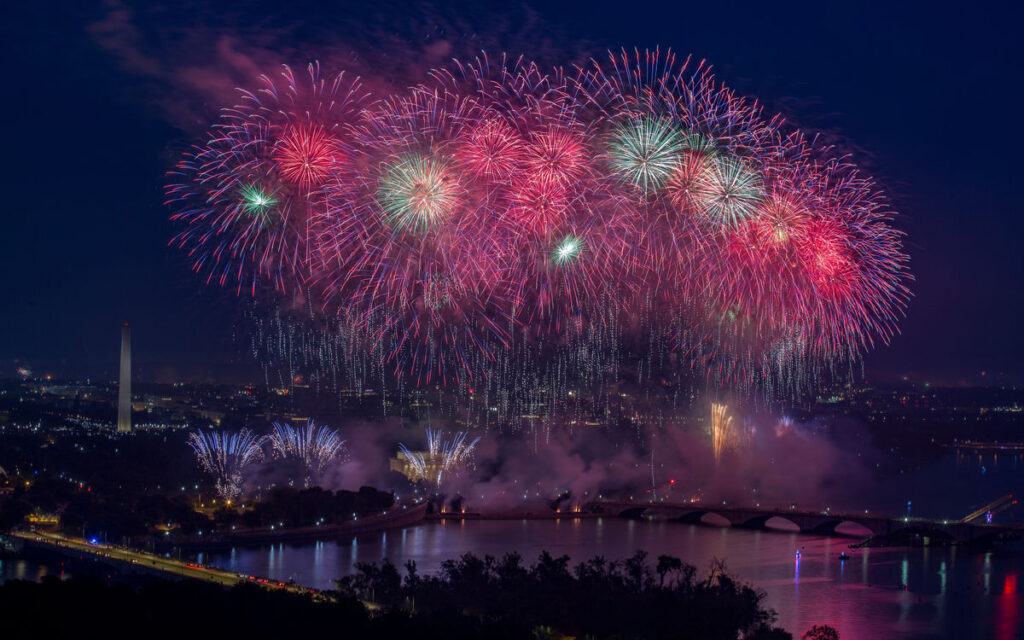
July 4, 2025 will mark the United States of America’s 249th birthday since the adoption of the Declaration of Independence on July 4,
1776. That means that next year, our country will be 2.5 centuries old.
For those looking to retrace the steps of those who helped
shape the freedom we all enjoy in the “Land of the Free and the Home of the
Brave,” we’ve pulled together some
amazing places that celebrate the birthplace of our country and best capture
the spirit of America.
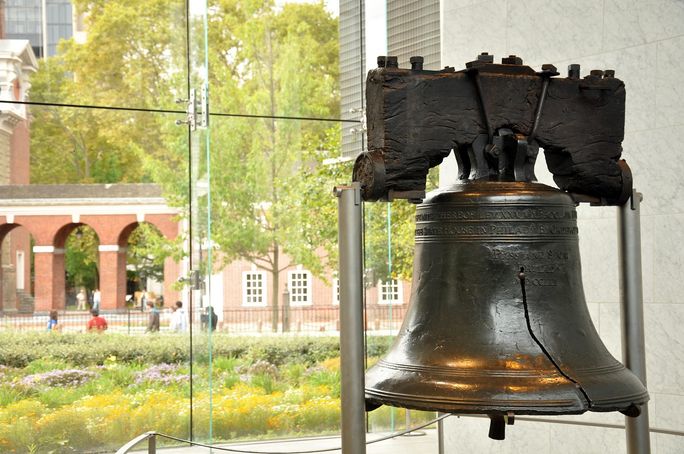
PHOTO: Liberty Bell. (photo via Flickr/Celine Harrand)
Independence Hall
The Declaration of Independence was debated, signed and
adopted in Philadelphia, Pennsylvania. Best known as the birthplace of American
democracy, Independence Hall is part of the Independence National Historic
Park, a UNESCO World Heritage Site.
Designed in the Georgian architectural style, the building
later added its iconic clock tower and steeple. The original Liberty Bell, a
global symbol of freedom once hung in the bell tower but now resides across the
street at the Liberty Bell Center.
Entry is free, but timed tickets are required throughout most
of the year. Guided tours are also provided by park rangers and cover the
Assembly Room, where the Declaration and Constitution were signed, a courtroom
and more. The Assembly Room has been restored to appear as it did in 1776 and
the inkstand used to sign the Declaration of Independence is still displayed
here.
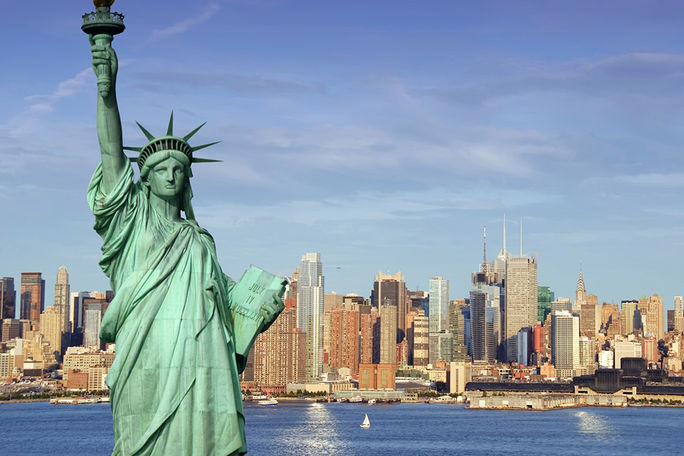
Statue of Liberty
Likely the most renowned of all our nation’s monuments and
one the most iconic landmarks in the world, the Statue of Liberty was a gift
from the people of France to commemorate the 1876 centennial of the American
Declaration of Independence.
Guests from all around the globe come to pay homage to Lady
Liberty situated on Liberty Island in New York Harbor. She holds a torch in her
right hand symbolizing enlightenment, a tablet in her left inscribed with the
date July 4, 1776 and broken chains at her feet representing the end of
oppression and tyranny. Guests can also climb the 162 narrow, spiral steps from
the pedestal to Lady Liberty’s crown, but advance reservations are required.
Her official name is ‘Liberty Enlightening the World’ and
though she arrived a shiny reddish color due to the copper used to build her,
she eventually turned green due to her many-years exposure to the elements.
Visitors can get to the island by taking a ferry from Battery Park in Manhattan
or Liberty State Park in New Jersey. One cannot imagine the feeling the
thousands of immigrants arriving by sea to Ellis Island when they saw this warm,
welcoming sight.
Boston Harbor & The Freedom Trail
Our country was founded on protest, and none more famous
than the Boston Tea Party during the American Revolution. Initiated by the Sons
of Liberty activists in colonial Massachusetts in 1773, it escalated
hostilities between Britain and American colonists, and got the attention of
the English when 342 chests of tea were thrown into the Boston Harbor
representing the colonists’ anger toward the British Crown’s “taxation without
representation.”
Visitors to Boston should not miss Freedom Trail, a 2.5
mile-long easily walkable red brick path through downtown. The famous route
includes 16 historically significant sites from the Revolutionary War. These include
the Paul Revere House, home of the famous midnight rider, Old North Church,
where the “one if by land, two if by sea” lanterns were hung, Granary Burying
Ground, the final resting place of Paul Revere, Samuel Adams and John Hancock
and “Old Ironsides”, the USS Constitution, the
world’ oldest commissioned warship afloat.
It’s like walking
through the pages of a living history book. Plan two to four hours at least,
depending on stops.

Lincoln Memorial
The nation’s capital is a must-visit destination for those
looking to immerse themselves in American history and pride. Washington, D.C.
is home to over 160 memorials and monuments, with about 30 to 40 considered major ones, especially those managed by the National Park Service on the
National Mall.
You’ll likely get different responses as to each visitor’s
favorite, but one of the most iconic is the Lincoln Memorial, honoring
our 16th President, Abraham Lincoln, who led the nation through the
Civil War and worked tirelessly to end slavery.
At 19 feet tall and containing 175 tons of Georgian marble, Lincoln
is seated in deep contemplation as he wrestles with the fate of a divided
nation. The interior walls display two of Lincoln’s most famous speeches: the
Gettysburg Address and his second Inaugural Address.
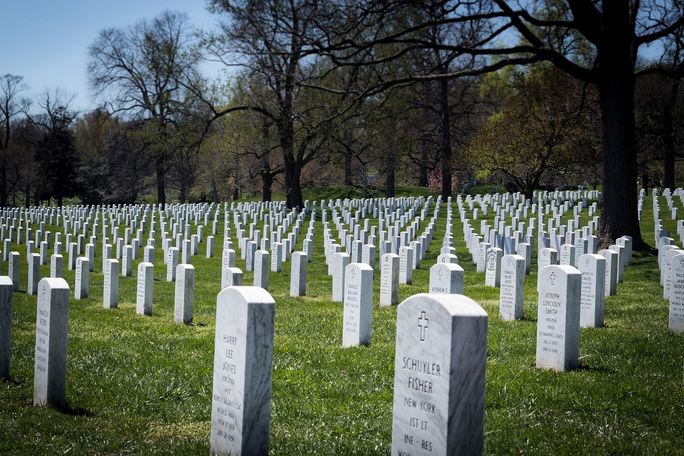
PHOTO: Arlington National Cemetery. (photo via Pixabay)
Arlington National Cemetery
The final resting place of more than 400,000 military
veterans and eligible dependents, Arlington National Cemetery, covering 639
acres, is a hallowed yet unforgettable destination that pays tribute to
America’s fallen heroes from every U.S. conflict since the Revolutionary War.
The seemingly endless rows of simple white crosses serve as
homage to the sacrifices and extraordinary lives of American service members
and their families. Some of the most renowned Americans buried here include
President John F. Kennedy, whose tombstone is marked by an eternal flame, First
Lady Jaqueline Kennedy Onassis, Senators Robert F. Kennedy and Edward “Ted”
Kennedy, Generals John J. Pershing, Omar Bradley, astronaut John Glenn, and
Supreme Court Justices Thurgood Marshall, William O. Douglas and Ruth Bader
Ginsberg, along with many other heroes who left an indelible mark on our
nation.
Don’t miss the changing of the guard at the Tomb of the
Unknown Soldier, a solemn, moving and powerful military ceremony that honors
unidentified U.S. service members who died in war. Regardless of weather,
guards are on duty 24 hours a day, 365 days a year.
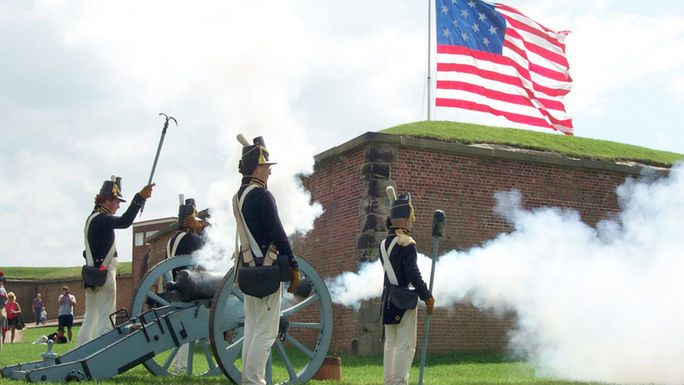
Fort McHenry. (Photo via National Park Service / Flickr / Creative Commons)
Fort McHenry
“O, say, does that Star-Spangled Banner yet wave, o’er the
land of the free and the home of the brave?”
At Fort McHenry in Baltimore, Maryland, that flag still
proudly waves just as it did on the fateful night of September 14, 1814, with
bombs bursting in air. The moving sight inspired American physician, Francis
Scott Key, to write what would become our nation’s national anthem, the
Star-Spangled Banner, while witnessing the British bombardment of the fort
during the War of 1812.
Fort McHenry National Monument and the Historic Shrine is
open to the public who can walk the star-shaped fort’s grounds, explore the
military barracks and see the restored structure complete with cannon
placements.
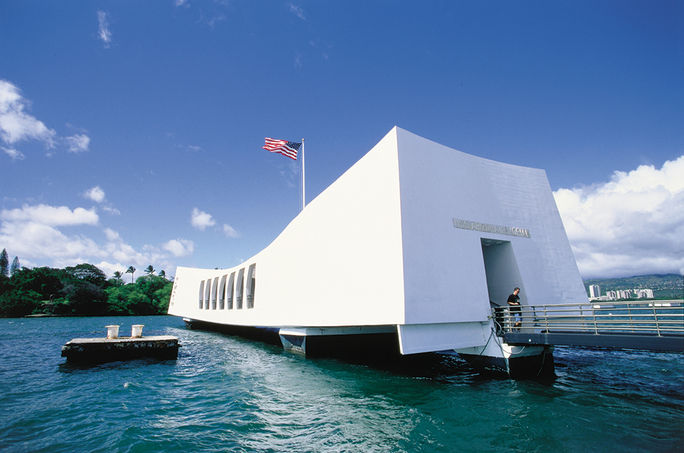
Pearl Harbor
With its USS Arizona Memorial and Battleship Missouri
Memorial, Pearl Harbor in Oahu, Hawaii honors America’s sacrifice, heroism and
ultimate victory after the brutal Japanese Imperial Navy surprise attack on
December 7, 1941.
The USS Arizona Memorial spanning the sunken warship
inspires somber silence from all who visit this underwater graveyard of 1,177
sailors who lost their lives in the attack, many going down with the ship. The
USS Missouri hosted the surrender ceremony in September 1945, bringing an end
to the world’s deadliest war. Together, these two memorials serve as the alpha
and the omega of America’s role in our greatest victory.
No visitor to Honolulu should pass on the opportunity to
experience this moving part of America’s storied past.
Benjamin Franklin once said, “Where liberty dwells, there is
my country.”
No other date on the calendar symbolizes all that our nation
stands for than July 4 – Independence Day. How fortunate we are to be able to visit these
still existing patriotic places and reflect on the stories they carry within
their forts, walls, statues, memorials and hallowed grounds.
For the latest travel news, updates and deals, subscribe to the daily TravelPulse newsletter.

